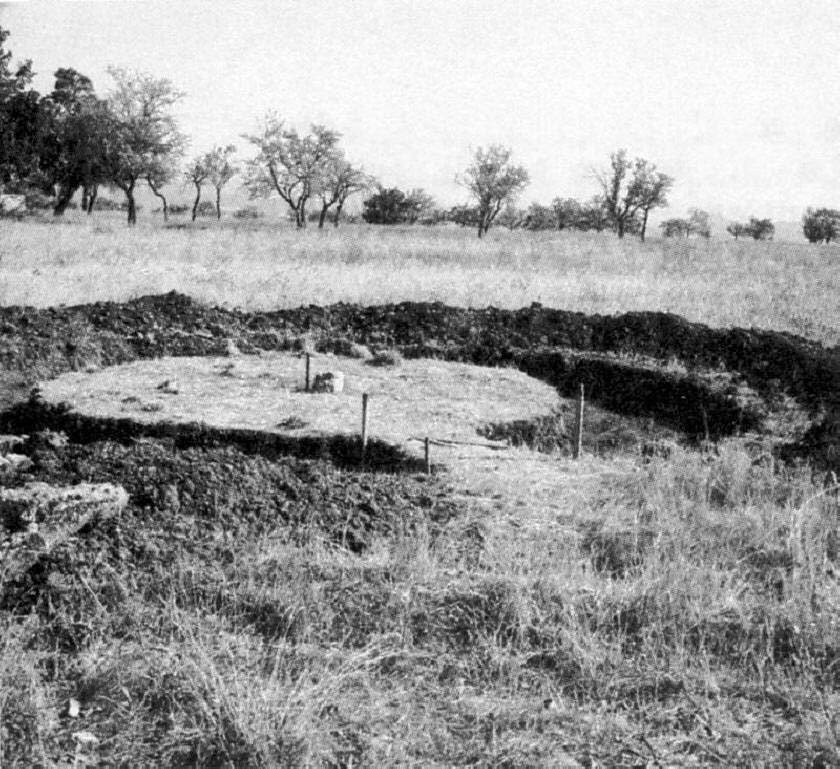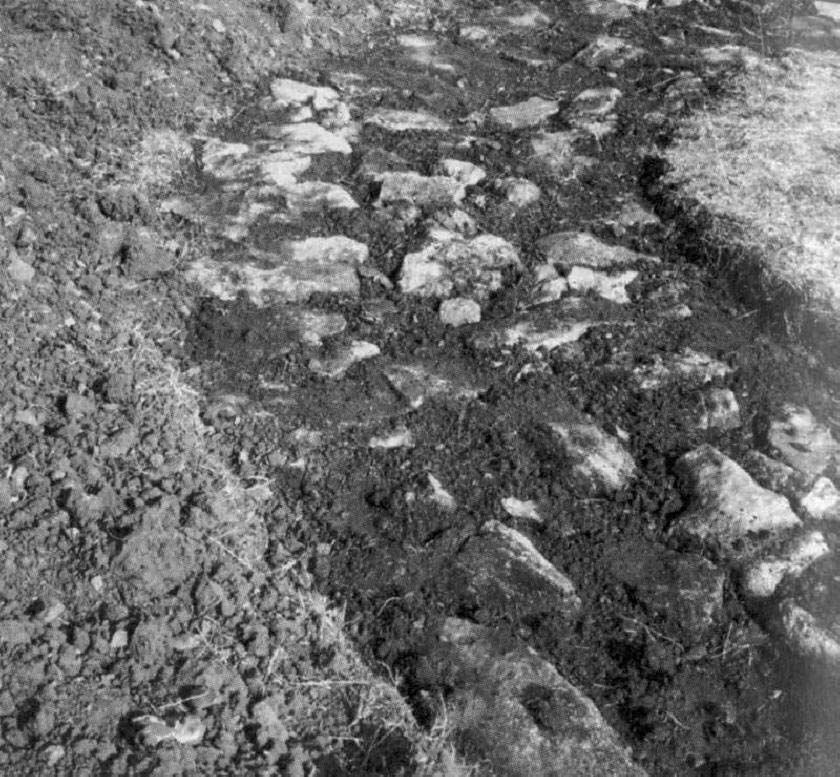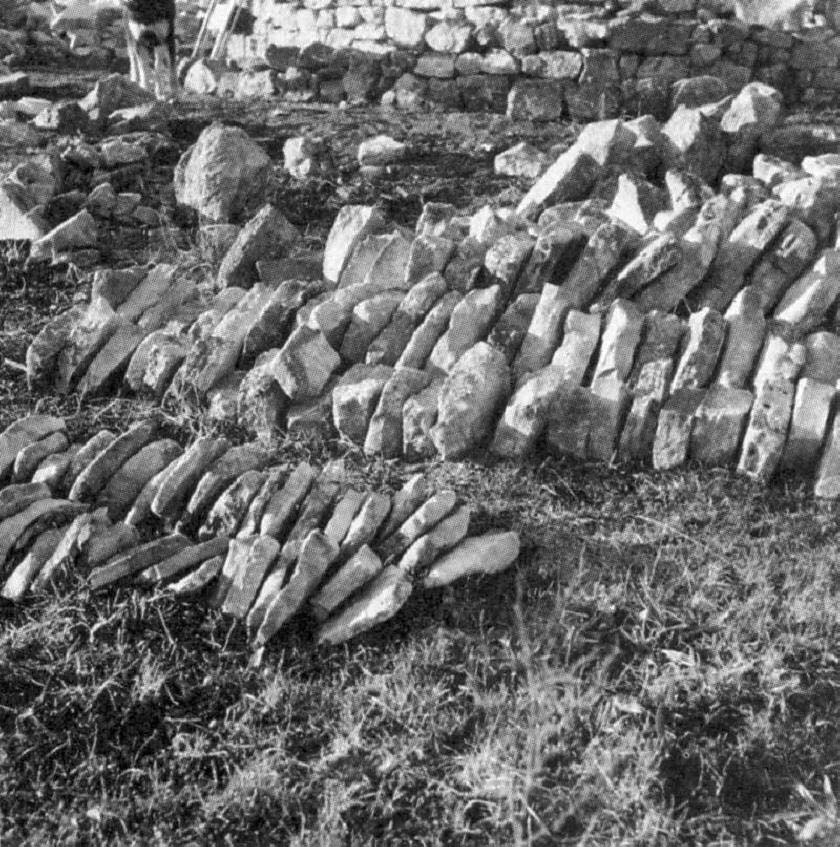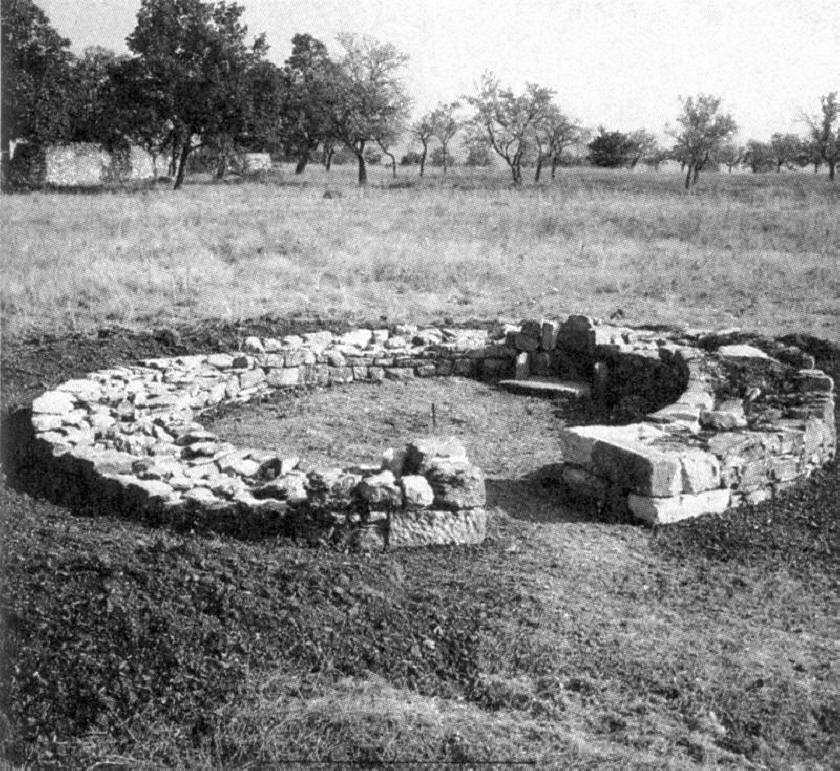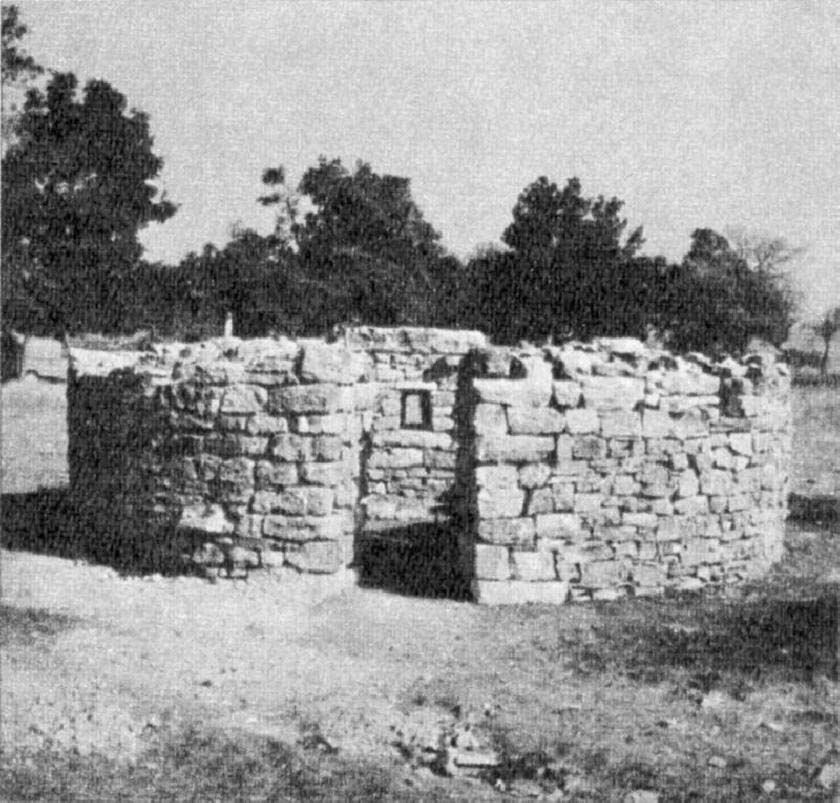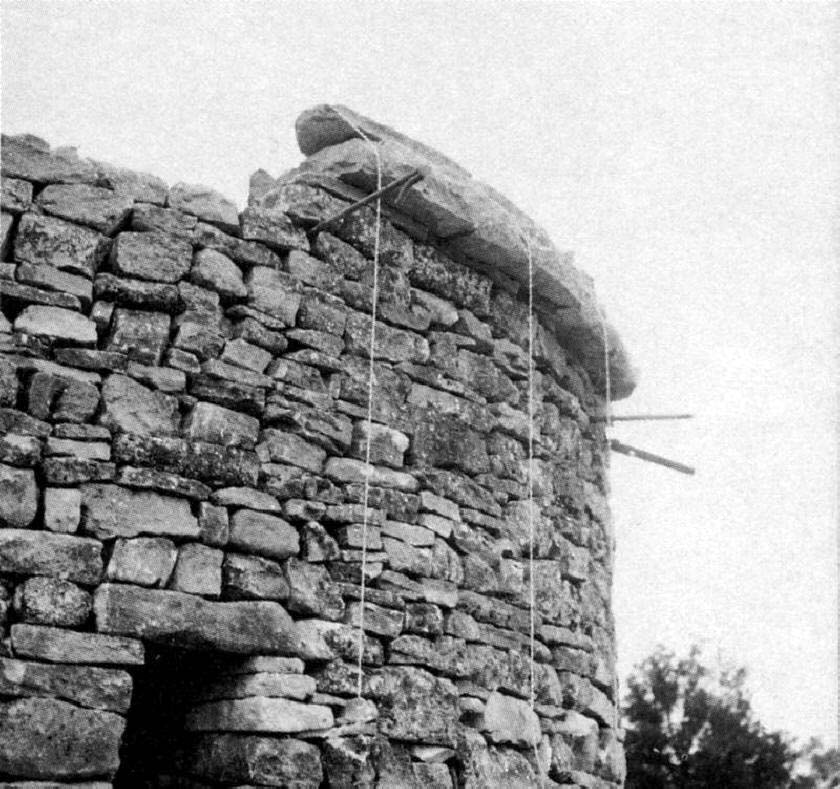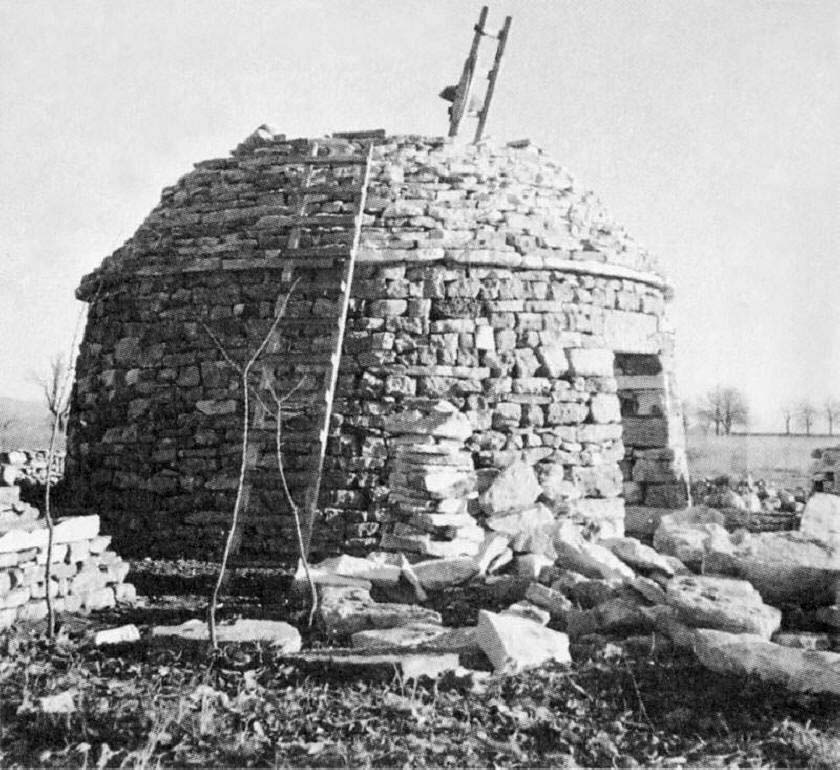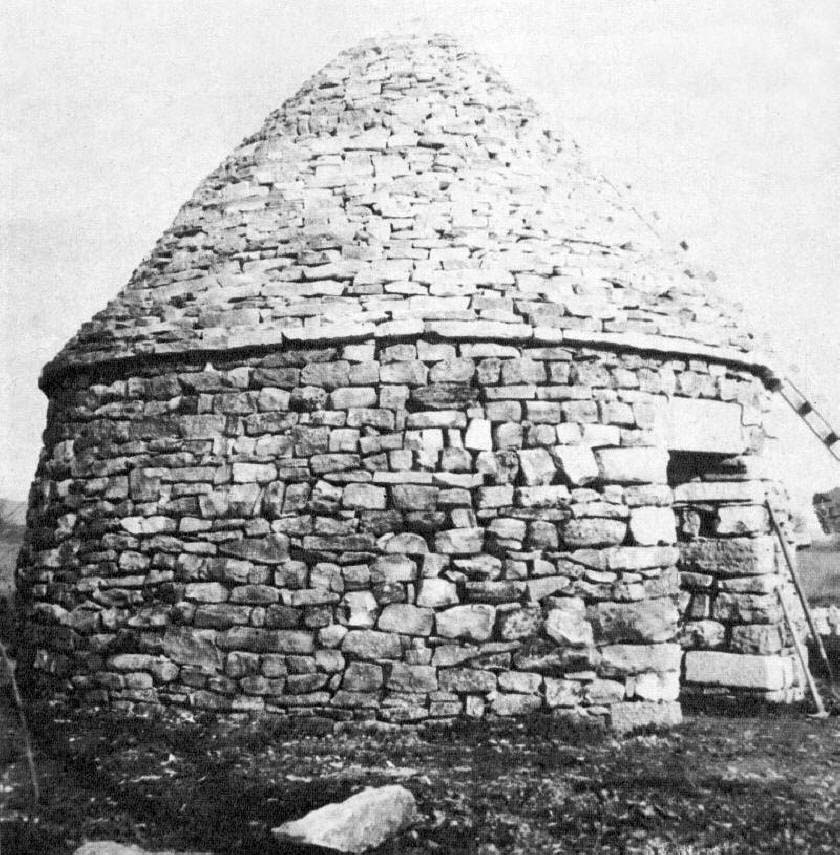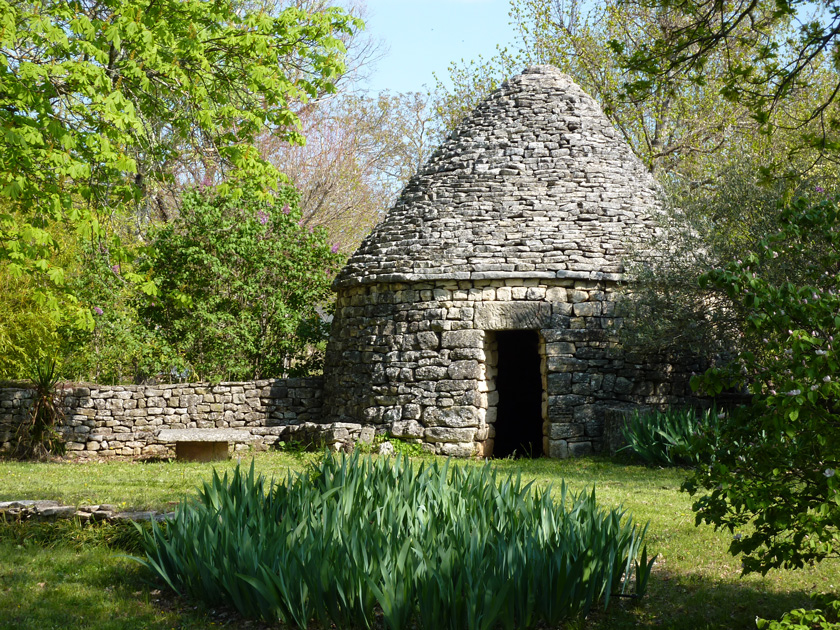|
BUILDING STAGES OF PIERRE MARTEL'S 'CABANON POINTU' Christian Lassure Introduction In 1967, the experimental construction of a "cabanon pointu" attempted by Provençal ethnologist Pierre Martel ended in failure: the dry stone hut under construction at La Bonnechère collapsed at half-height due to the absence of headers in the masonry of its base part. After having dismantled the unstable remains of this first "cabanon" and being better acquainted with the art of dry stone construction, the builder managed to successfully erect a second ''cabanon'' in 1970. The story of the Bonnechère dry stone hut was reported by Charles Ewald in La Revue des bricoleurs, September 1973, p. 54-64 ("À construire vous-même, le « cabanon » romain (sic)"). It was also mentioned in this writer’s "Bibliographie analytique et critique de l'architecture rurale en pierre sèche de Provence," published in L'Architecture vernaculaire rurale, supplement N. 2, 1980, p. 100-102. Finally, in 1985, Pierre Martel himself gave his testimony on the events of his two construction attempts in Pierre sèche en Provence, a book co-written with Pierre Coste ("L'histoire complexe d'un simple cabanon. Témoignage de Pierre Martel sur le cabanon pointu de la Bonnechère," Les Alpes de lumière, N. 89-90, 1st and 2nd quarters 1985, p. 61-88). The base of the "cabanon pointu" is cylindrical (external diameter: 5.56 m; height: 1.80 m) with a marked batter for the outer wall. The covering is conical, culminating at about 4.00 m ( finial included) and jutting out at its base to form a drip edge. The cell is circular (internal diameter: 3.70 m). It includes the following fittings: two niches, a squint hole, a fireplace. Pierre Martel used the method of the central mast with two strings, one giving the interior radius, the other the exterior radius. He set up temporary stone benches to provide good support under his feet and installed an interior floor on two beams to serve as scaffolding. The masonry techniques used are classic: Photos The eight illustrations that follow were digitised from the black and white photos of the article published in 1973 in La Revue des bricoleurs. The poor quality of the result reflects the deficiency of the original photos. The ninth photo is a colour photo by the late Jean Laffitte.
To print, use landscape mode © CERAV To be referenced as : Christian Lassure page d'accueil
sommaire maçonnerie |

